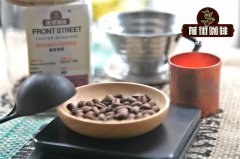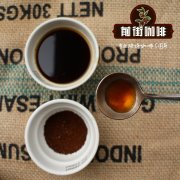Indonesia Sumatra Manning treatment-wet planing this treatment has the characteristics of hand grinding

Professional coffee knowledge exchange More coffee bean information Please pay attention to coffee workshop (Weixin Official Accounts cafe_style)
Indonesia's territory from west to east, more than 17,000 large and small islands, emerald scattered on the earth's equator line. Indonesian coffee is mainly produced in Sumatra, Java, Sulawesi and Bali, among which Sumatra is the most famous "Mantenin".
MANDHELING Coffee is Indonesia's most representative coffee bean, and anyone who likes coffee knows MANDHELING. The Mantenin are actually a minority group living in the northern highlands of Sumatra Island. The origin of the name of Mantenin Coffee is related to the history of Japanese aggression. During the Japanese occupation of Indonesia in World War II, a Japanese soldier drank excellent coffee in a cafe. He asked the owner the name of the coffee. The owner mistook him for asking where you were from and replied: Mantenin. When Japanese soldiers returned home after the war, they recalled drinking "Mantenin" in Indonesia. So I asked someone to ship 15 tons from Indonesia to Japan, which was very popular. Mantenen's name spread like this.
Mantenin comes mainly from two regions:
One is Aceh, which contains Lake Tawer, and Gayo Mountain.
The other is North Sumatra, a plateau surrounded by Lake Toba and LingTong.
02| treatment
Mantenen's unique wet planing method
Wet Hulling is the traditional Indonesian coffee processing method. In its name alone, wet planing is similar to wet processing (washing), however, the cup flavor of the two treatments is quite different, and the coffee processed by wet planing is usually rich and strong, and the personality is very distinct.
the step of that wet planing proces method are as follows: 1. removing peel and pulp, and reserving parchment and mucous membrane; 2. fermenting in a pool; 3. washing away mucous membrane; 4. drying parchment in the sun for 2-3 days until the moisture content is 20-24%; 5. planing parchment
Dry the beans to a moisture content of 12-13%.
Indonesia's tradition of wet planing begins with the local weather. Indonesia's annual humidity is between 70 and 90%, typhoons are frequent, and in some areas, annual rainfall can reach as much as 2,000 mm. How does Indonesia overcome such harsh weather conditions to produce rich, full-bodied mantnings, given that green beans are most afraid of rain? That is to rely on wet planing method.
In tropical climates, coffee takes an average of two to three weeks to dry. In Indonesia's humid climate, dry coffee is a big problem. Coffee must take a longer time to dry, during which time the coffee still maintains a high humidity, which makes it easier for bacteria to penetrate the green coffee beans.
In the ordinary washing process, the drying process is carried out with parchment paper, so as to protect the raw beans from external damage to a certain extent. However, we can note that wet planing removes parchment for the final drying step, so that sunlight hits the green beans directly on the surface, drying the beans quickly, two to three times faster than washing.
Important Notice :
前街咖啡 FrontStreet Coffee has moved to new addredd:
FrontStreet Coffee Address: 315,Donghua East Road,GuangZhou
Tel:020 38364473
- Prev

Mantenin Coffee beans hand-made flavor taste introduce Indonesia gold Mantenin coffee how to make a good taste
Professional coffee knowledge exchange more coffee bean information please follow the coffee workshop (Wechat official account cafe_style) step: ① fold: put the good sauce away, put it in the cup, mix the quantity with the cup. Put the cup on top of sharing. ② cup: hold the water in the hand cup along the cup.
- Next

Comparison of the difference between wet planing and washing by Manning treatment in Sumatra, Indonesia
Professional coffee knowledge exchange more coffee bean information please follow the coffee workshop (Wechat official account cafe_style) the coffee we usually drink is not a coffee bean growing out, but a round fruit. Remove the outer skin and pulp through various treatment methods to get the innermost coffee seed, which becomes the coffee we usually drink after baking.
Related
- What is the meaning of lactic acid fermentation with coffee bean treatment?
- How to judge the state of foam by sound?
- How does the latte pull out the unicorn pattern? Come to get for a little trick to improve the flower pull!
- Will flower pulling affect the taste of the latte?
- Do you know the history of coffee?
- The difference between honey treatment and sun washing what is raisin honey treatment?
- What kind of milk can a novice use to make coffee foam to keep the foam longer? The correct method and skills of milking tutorial sharing
- Why do washed coffee beans taste sour? Flavor characteristics of washed Coffee
- Introduction to the skill of how to practice the size and height of water injection around the circle of hand-brewed coffee
- How do beginners practice coffee flower drawing from scratch?

